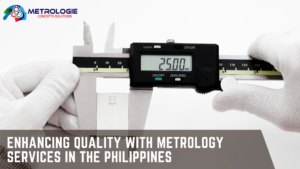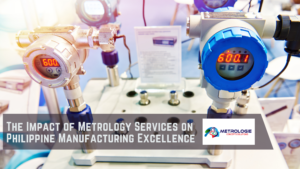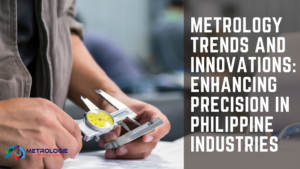In today’s fast-paced industrial landscape, efficiency is the key to success. Filipino industries are constantly seeking innovative solutions to optimize their operations and stay competitive in the market. One such solution gaining traction is Thermal Mapping. This article delves into the intricacies of Thermal Mapping technology and explores its myriad benefits for various sectors in the Philippines.
Unlocking Efficiency: The Benefits of Thermal Mapping for Filipino Industries is a pivotal strategy for enhancing productivity and sustainability across various sectors in the Philippines. This comprehensive guide explores the profound advantages of thermal mapping and its transformative impact on industrial operations, energy management, and environmental conservation. Dive into the world of thermal mapping and discover how it revolutionizes the landscape of Filipino industries.
Introduction to Thermal Mapping
What is Thermal Mapping?
Thermal Mapping is a sophisticated technique used to monitor and analyze temperature variations within a given space or system. By employing specialized sensors and imaging equipment, Thermal Mapping enables real-time visualization of temperature distribution, allowing for precise identification of hot spots, cold zones, and thermal anomalies.
Importance in Various Industries
Thermal Mapping holds immense significance across diverse industries, including manufacturing, food processing, pharmaceuticals, logistics, and more. It serves as a valuable tool for optimizing processes, ensuring product quality, and maintaining regulatory compliance.
Understanding Thermal Mapping Technology
How Does Thermal Mapping Work?
Thermal Mapping operates on the principle of infrared thermography, wherein infrared radiation emitted by objects is captured and converted into temperature data. This data is then processed to generate thermal images, providing valuable insights into thermal patterns and trends.
Types of Thermal Mapping Technology
Thermal Mapping technology encompasses a range of devices, from handheld thermal cameras to advanced thermal imaging systems mounted on drones or unmanned aerial vehicles (UAVs). Each type offers unique capabilities suited to specific applications and environments.
Applications Across Industries
Thermal mapping finds widespread applications across diverse industries in the Philippines, including manufacturing, energy production, agriculture, and infrastructure development. From monitoring machinery and electrical systems to assessing building insulation and crop health, thermal imaging serves as a versatile tool for enhancing efficiency, safety, and sustainability.
Enhancing Manufacturing Processes
In the realm of manufacturing, thermal mapping revolutionizes production workflows by identifying inefficiencies, preventing downtime, and ensuring product quality. By monitoring heat signatures in machinery and production lines, manufacturers can preemptively address equipment malfunctions, optimize energy usage, and minimize waste generation.
Optimizing Energy Management
Unlocking Efficiency: The Benefits of Thermal Mapping for Filipino Industries extends to energy management, where precise thermal data facilitates strategic decision-making and resource allocation. By pinpointing energy leaks, inefficiencies, and areas of excessive heat generation, businesses can implement targeted interventions to reduce energy consumption, lower utility costs, and mitigate environmental impact.
Ensuring Structural Integrity
In the construction and infrastructure sectors, thermal mapping plays a pivotal role in ensuring structural integrity, safety, and longevity of buildings, bridges, and other infrastructure assets. By detecting thermal anomalies such as moisture intrusion, insulation deficiencies, and structural defects, engineers and architects can address potential issues before they escalate, thereby enhancing durability and resilience.
Benefits of Thermal Mapping in Filipino Industries
Enhancing Operational Efficiency
One of the primary benefits of Thermal Mapping is its ability to optimize operational efficiency. By identifying thermal irregularities and potential bottlenecks, businesses can streamline processes, minimize energy consumption, and maximize resource utilization.
Preventing Equipment Failure
Thermal Mapping plays a crucial role in predictive maintenance by detecting early signs of equipment malfunction or failure. By monitoring temperature variations in machinery and infrastructure, companies can proactively address issues before they escalate, thus avoiding costly downtime and repairs.
Improving Product Quality
In industries such as food processing and pharmaceuticals, maintaining optimal temperature conditions is paramount to ensuring product quality and safety. Thermal Mapping enables continuous monitoring of temperature-sensitive goods throughout the production and distribution chain, safeguarding against spoilage, contamination, and compliance violations.
Case Studies: Real-World Examples of Thermal Mapping Success
Manufacturing Sector
A leading manufacturing company in the Philippines implemented Thermal Mapping to optimize its production processes. By identifying and rectifying thermal inefficiencies in its manufacturing facilities, the company achieved significant cost savings and productivity gains.
Food Processing Industry
In the food processing industry, a renowned Filipino manufacturer utilized Thermal Mapping to monitor temperature fluctuations in its cold storage facilities. This proactive approach helped prevent food spoilage, minimize waste, and uphold stringent quality standards.
Pharmaceutical Sector
A pharmaceutical company operating in the Philippines leveraged Thermal Mapping to ensure compliance with regulatory guidelines governing temperature-sensitive medications and vaccines. By implementing robust thermal monitoring systems, the company safeguarded the integrity of its products and bolstered consumer trust.
Challenges and Limitations of Thermal Mapping
Cost Considerations
While Thermal Mapping offers undeniable benefits, the initial investment in equipment and infrastructure can be substantial. Moreover, ongoing maintenance and calibration expenses may pose additional financial burdens for businesses, especially small and medium-sized enterprises (SMEs).
Interpretation of Data
Interpreting thermal data requires specialized knowledge and expertise. Without proper training, operators may struggle to accurately analyze thermal images and derive actionable insights, limiting the effectiveness of Thermal Mapping as a decision-making tool.
Implementation Challenges
Deploying Thermal Mapping technology across large-scale industrial operations can be logistically complex. Factors such as access restrictions, environmental conditions, and data integration issues may hinder seamless implementation and adoption.
Future Prospects: Advancements in Thermal Mapping Technology
Despite existing challenges, the future of Thermal Mapping looks promising. Ongoing advancements in sensor technology, data analytics, and artificial intelligence (AI) are poised to enhance the capabilities and accessibility of Thermal Mapping solutions, driving further innovation and adoption across Filipino industries.
Conclusion
In conclusion, Thermal Mapping emerges as a game-changing technology with the potential to unlock efficiency and drive sustainable growth in Filipino industries. By harnessing the power of thermal data, businesses can optimize processes, mitigate risks, and deliver superior products and services in an increasingly competitive market landscape.
Unique FAQs
- Is Thermal Mapping applicable to all industries?
- While Thermal Mapping can benefit a wide range of industries, its applicability depends on specific operational requirements and environmental factors.
- How does Thermal Mapping differ from traditional temperature monitoring methods?
- Unlike traditional temperature monitoring methods, Thermal Mapping offers real-time, non-invasive insights into temperature distribution and trends, enabling proactive decision-making and risk management.
- What are the regulatory implications of Thermal Mapping in industries such as pharmaceuticals and food processing?
- Industries subject to stringent regulatory standards must ensure compliance with temperature control guidelines and documentation requirements when implementing Thermal Mapping solutions.
- Can Thermal Mapping help reduce energy consumption and carbon footprint?
- Yes, by optimizing energy usage and minimizing thermal inefficiencies, Thermal Mapping can contribute to sustainability efforts and reduce environmental impact in industries reliant on thermal processes.
- What role does data analytics play in maximizing the benefits of Thermal Mapping?
- Data analytics plays a crucial role in extracting actionable insights from thermal data, enabling predictive maintenance, process optimization, and strategic decision-making for enhanced operational efficiency.




